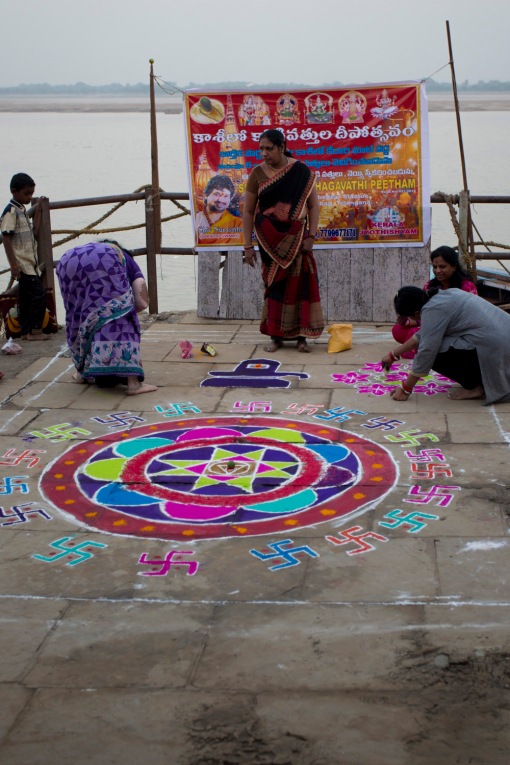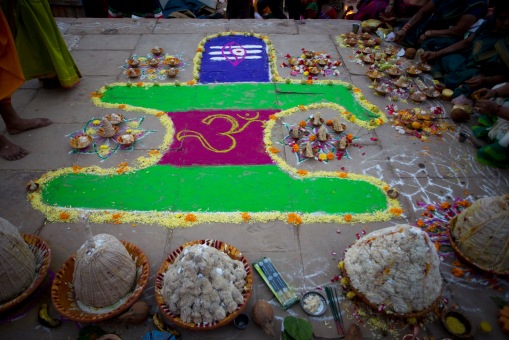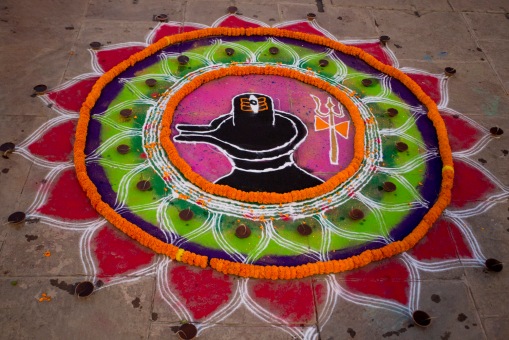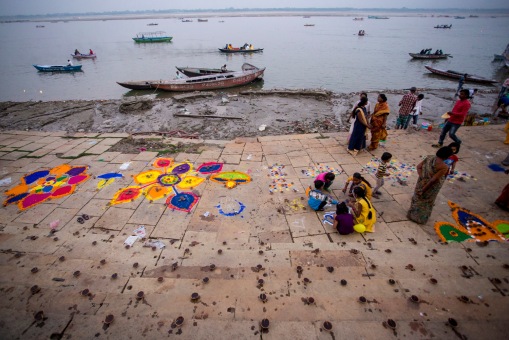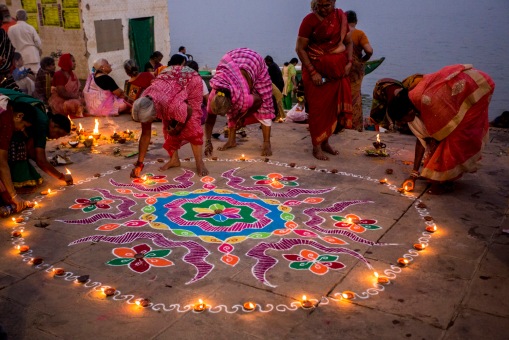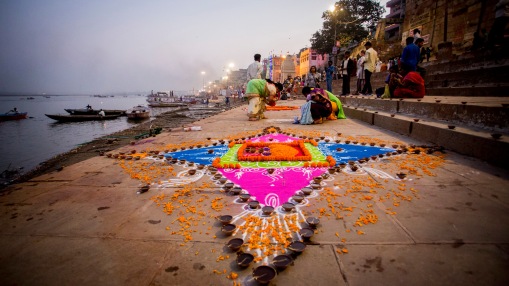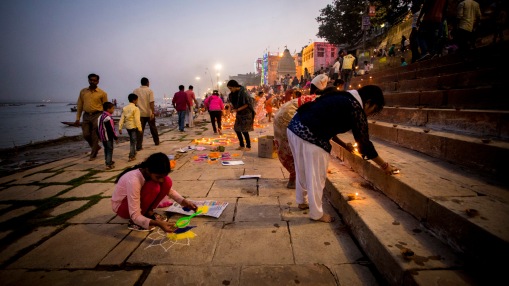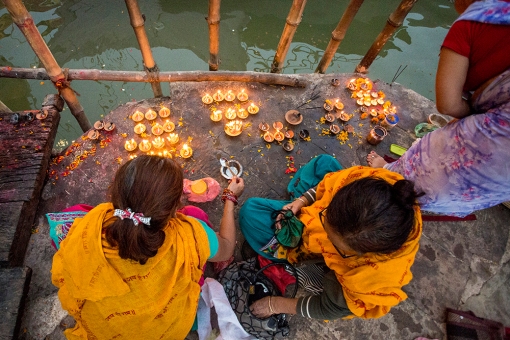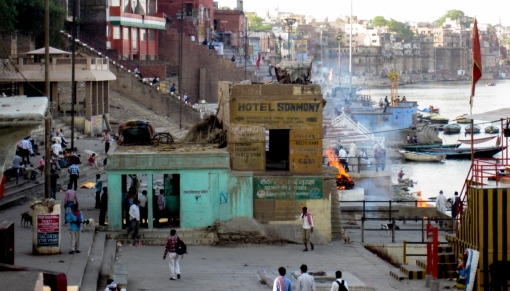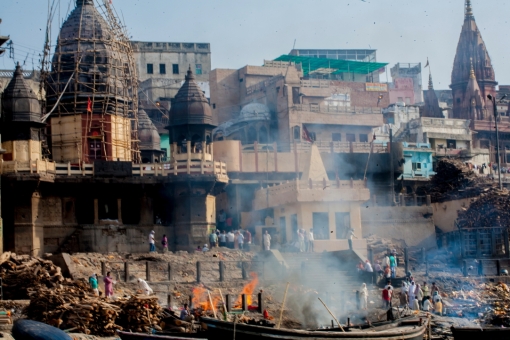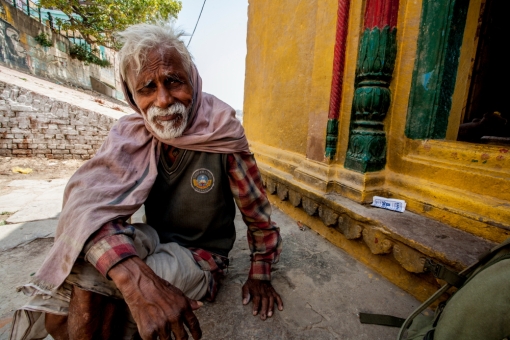This time our Bangaluru trip was a short one. We had only one spare day in hand for any outing to nearby place . After much discussion and research we chose Bheemeshwari as our day-out.
Bheemeshwari is some 100 Km away from Bangaluru and if one is residing towards Kanakpura road, it might come to be shorter.
We started from Sarjapur at about 7’clock. After crossing Kanakpura as we turned left there was some road digging going on. The residents directed the driver towards a round about way through the locality to reach the main road.On the main road our driver took the wrong turn and we drove about 25 km. on the wrong direction. However later on we retraced and reached the turn from where Bheemeshwari was 21 km.
Further on the road there was a check post of forest department where vehicle numbers were being noted, the bus ahead of us was checked thoroughly. beyond that point the jungle engulfed the road. The boards on road side told us that we had entered the area of Cauvery National park. Though it is said that the best time to visit the place is from Oct.to February, I feel October is a better option than February. Just after the rains the jungle would have been much greener and may be we could have witnessed more streams and brooks running and few of water falls, if not gushing then trickling down.
Well ,it was end of February and jungle catered mixed display of green and dried up trees. The brown, black hills stood bare as backdrop. Billboards of many animals were displayed on the roadside but none were seen by us. However the melodious chirping of various birds welcomed us. Half of the jungle was yellow and brown but the sun filtering through the branches and leaves added a resplendent charm to the landscape.
As we drove further we could see the Cauvery running on one side . The river was lost to view in between but reappeared after some distance. Vehicles were parked and groups of people could be seen near the water. Our taxi raced through the jungle till we reached the Jungle lodge. The jungle lodge provides certain adventure sports like walking on ropes, coracle rides. They organize fishing camps too. Anglers come here to fight with the mighty Masheer fish. The camp follows a “Catch and Release” policy. Jungle lodge provides accommodation and food too. One can also opt for spending only few hours of the day here. The charges of Rs. 1700 per person appear a bit too much for the lunch, tea and few activities one can be part of during that time.
we did not spent time at lodge but spent our time on various spots at the bank of Cauvery.
The first spot we got down was comparatively less crowded. Rather we were the only strollers at that particular hour. Cauvery flowed silently. The blue sky with white fluffy clouds dipped into the cool waters appeared to take refuge from the bright hot sun overhead. Under the shade of two huge trees, the dried yet damp leaves caressed the soles with a cool refreshing touch. The alluring curves of the river disappearing into deep woods enticed one to follow it but the foreboding looks of jungle and far off sounds dared one to venture.
There were these two big trees, one with white stem and another the black. The thick roots of trees embracing and entwining each other lay open due to soil erosion writing a beautiful ode to intimacy.
While walking on the bank of the river we came across an idol of a God-Goddess, a nandi and other remains of temple strewn around half buried in the sand. There were a few idols submerged in water too. Were they all part of a temple once erect on the banks of Cauvery? Did the mighty, roaring Cauvery of monsoon had destroyed and gulped the entire temple ? It might be so but the red colored powder smeared on the forehead of deity while it was worshiped in the temple still glowed, perhaps waters of river could not wash the colour of the unshakable faith.
On this spot across the road is a small temple. It appears to be comparatively new. New replaces the old and the cycle of destruction, creation and evolution goes on.
Further down the road we stopped at another place. This place was full of people and their various activities. many people were taking bath, women washing and drying their clothes. kids splashing and swimming. Others were enjoying the coracle ride. On the other bank of river the red sand sparkled in the afternoon sun, a group of youngsters on bikes were having fun on that side away from all the din. Various groups settled down under the shade of trees, mats spread, making fire, preparing food, booming laughter, echoing voices, the mirth, the jest filled the air with a soothing warmth and the ripples of Cauvery nestled close to the boulders to whisper the sweet cooing symphony of ever lasting togetherness.
On the spot we came across a group of people carrying an idol of goddess riding on the lion. The idol was kept on an open palanquin/ palki of bamboos which few men were carrying on their shoulders. The procession came near the river, women of the group performed certain rituals while drummer was continuously beating the drum and then the procession returned. While returning few men were trying to pull the palki back while others were pulling it to front. This too was a kind of ritual. There always are two opposite kind of forces working in nature, in life.
After spending few hours we decided to return from our day out on the banks of Cauvery. It was a day full of myriad shades, moods and emotions. The quiet moments on the secluded bank, in the company of silently flowing Cauvery, tall trees, the distant jungle and the azure sky filled my heart with peace and serenity. Looking at the river made me think that during monsoons the river swells, roars, gushes and destroys too, in summers it shrinks in volume but irrespective of the outward influences it continues to flow. It appeared to give a message of living every season, taking the time as it comes, tasting all the flavours with a resigned equanimity to all outside influences yet moving on. And then there were people engaged in various kinds of activities– cooking, eating, playing, resting, gossiping and performing rituals. Irrespective of the nature of one’s engagement, solitary or in groups, the continuous murmuring of the ripples of water , the placid rhythmical flow of the river provide an assurance to everyone. Perhaps we all have a wanderer tucked in inside all of us and the journey of river hits the chord deep within.











pics- sunder iyer



















